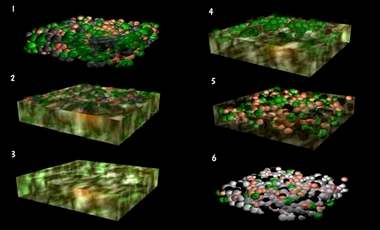

The composition of the clasts depends on the composition of rock from which the clasts were derived, and on the degree of chemical weathering that the clasts have undergone. The size, angularity, sphericity, and sorting of clasts depends on the medium (water, ice, or wind) that transports the clasts and, in the case of water or wind, on both the velocity of the medium and the distance of transport.

This table provides common rock names specialists sometimes use other, more precise names based on more complex classification schemes. With these characteristics in mind, we can distinguish among several common types of clastic sedimentary rocks. In some, the cement consists predominantly of quartz, whereas in others, it consists predominantly of calcite. Not all clastic sedimentary rocks have the same kind of cement.

Well-sorted sediment consists entirely of sediment of the same size, whereas poorly-sorted sediment contains a mixture of more than one clast size. Sorting of clasts indicates the degree to which the clasts in a rock are all the same size or include a variety of sizes. Sphericity, in contrast, refers to the degree to which the shape of a clast resembles a sphere. Angularity indicates the degree to which clasts have smooth or angular corners and edges. Clasts may be composed of rock fragments or individual mineral grains. Composition refers to the makeup of clasts in sedimentary rock. Names used for clast size, listed in order from coarsest to finest, are: boulder, cobble, pebble, sand, silt, and clay. Size refers to the diameter of fragments or grains making up a rock. Cement consists of minerals (commonly quartz or calcite) that precipitate from groundwater and fill the spaces between clasts. Compacted sediment may then be stuck together to make coherent sedimentary rock by the process of cementation.

First, once the sediment has been buried, pressure caused by the weight of overlying material squeezes out water and air that had been trapped between clasts, and clasts press together tightly, a process called compaction. The lithification of clastic sediment involves two steps.


 0 kommentar(er)
0 kommentar(er)
